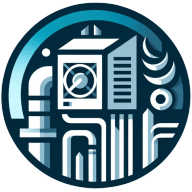Embarking on the journey of installing a residential HVAC system can be daunting. This comprehensive guide aims to simplify the process, providing you with the knowledge you need to make informed decisions. We'll delve into the intricacies of HVAC installation, from choosing the right system to understanding the installation process and maintaining your system for optimal performance.
Choosing the Right HVAC System
The first step in residential HVAC installation is selecting the right system. This decision depends on numerous factors, including the size of your home, your climate, and your budget.
A smaller home may only require a single-stage system, which operates at full capacity whenever it's on. These systems are less expensive but can lead to uneven temperatures and higher energy bills.
For larger homes, a two-stage system might be a better fit. These systems can operate at a lower capacity when full power isn't needed, leading to more consistent temperatures and lower energy costs.
Variable-speed systems offer the most comfort and efficiency. They adjust their output to match the exact heating and cooling needs of your home at any given time. While these systems are more expensive upfront, they can save you money in the long run through lower energy bills.
Understanding the Installation Process
Once you've chosen the right HVAC system, it's time to understand the installation process. This begins with a thorough assessment of your home's heating and cooling needs. Your HVAC contractor will perform a load calculation to determine the size of the system your home requires.
After the load calculation, the contractor will prepare your home for installation. This may involve sealing ductwork, insulating your home, or making other improvements to ensure your new system operates efficiently.
The actual installation of the HVAC system involves placing the indoor and outdoor units, connecting them with refrigerant lines, and hooking up the system to your home's electrical system. Once the system is installed, the contractor will test it to ensure it's operating correctly.
Post-Installation Considerations
After your HVAC system is installed, there are several things you should consider to ensure it operates efficiently and lasts for many years.
Regular maintenance is crucial. This includes changing the air filter regularly, scheduling annual tune-ups with a professional, and keeping the area around your outdoor unit clear of debris.
You should also consider investing in a programmable thermostat. These devices allow you to set a schedule for your HVAC system, ensuring it only runs when you need it to. This can lead to significant energy savings.
Common Installation Mistakes to Avoid
While a professional should handle the actual installation of your HVAC system, it's important to be aware of common mistakes that can occur during the process.
One common mistake is choosing the wrong size system. A system that's too large for your home will cycle on and off frequently, leading to wear and tear. A system that's too small won't be able to adequately heat or cool your home.
Another mistake is improper installation. This can lead to a variety of problems, including poor performance and higher energy bills. Always hire a reputable contractor to install your HVAC system.
The Importance of Energy Efficiency
When choosing and installing a residential HVAC system, it's important to consider energy efficiency. An energy-efficient system will not only save you money on your energy bills, but it will also reduce your carbon footprint.
Look for systems with a high Seasonal Energy Efficiency Ratio (SEER) and Heating Seasonal Performance Factor (HSPF). These ratings indicate how efficiently a system uses energy to heat and cool your home.
Also, consider systems that use environmentally friendly refrigerants. These substances are less harmful to the ozone layer than traditional refrigerants.
The Role of HVAC in Indoor Air Quality
Your HVAC system plays a crucial role in maintaining the quality of your indoor air. A well-maintained system can help reduce allergens, control humidity, and improve the overall comfort of your home.
Consider adding an air purifier to your system to further improve your indoor air quality. These devices can remove pollutants from your air, leading to healthier indoor air.
Wrapping Up Your Residential HVAC Installation Journey
Embarking on a residential HVAC installation project is a significant undertaking. However, with the right knowledge and a reputable contractor, you can ensure your new system is installed correctly and operates efficiently. Remember, the key to a successful installation lies in choosing the right system, understanding the installation process, and maintaining your system post-installation. With this comprehensive guide, you're well on your way to enjoying the comfort and efficiency of your new residential HVAC system.

